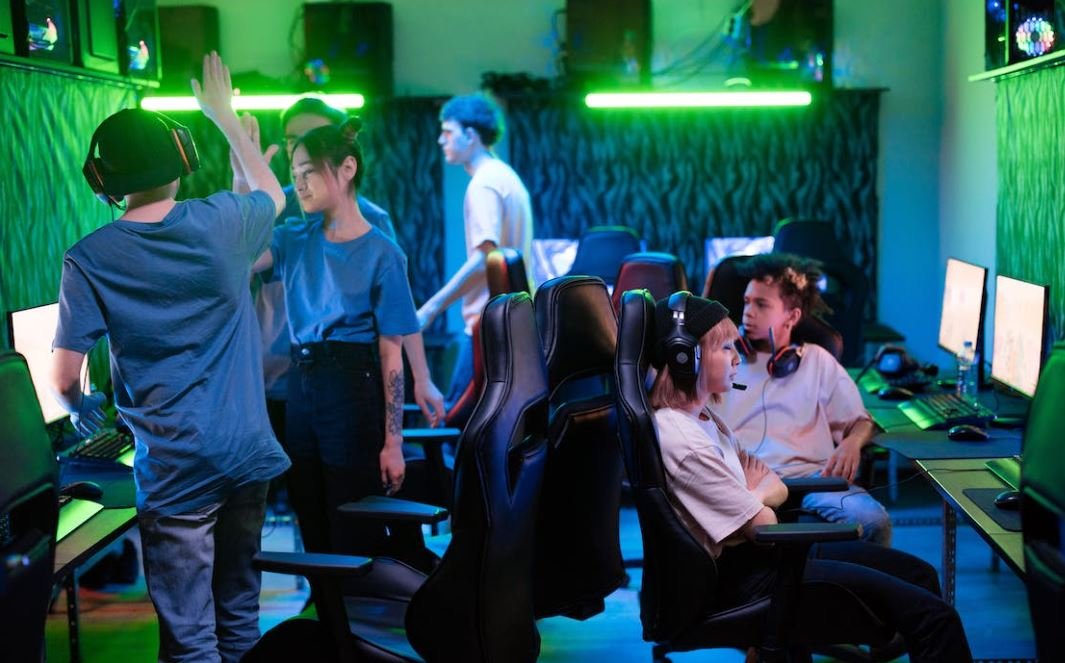AI Voice Synthesis
With the rapid advancement of artificial intelligence (AI) technology, AI voice synthesis has emerged as a powerful tool that can generate human-like speech. This technology utilizes deep learning algorithms to mimic the nuances of speech, from accents to intonations, with remarkable accuracy. As a result, AI voice synthesis is finding applications in various industries, such as customer service, entertainment, and accessibility.
Key Takeaways:
- AI voice synthesis uses deep learning algorithms to mimic human speech.
- Applications of AI voice synthesis include customer service, entertainment, and accessibility.
- AI voice synthesis improves efficiency and provides a personalized experience.
One fascinating aspect of AI voice synthesis is its ability to accurately replicate the unique characteristics of different voices. By analyzing large datasets of speech samples, AI algorithms can learn to produce vocal outputs that are virtually indistinguishable from those of specific individuals, including celebrities or renowned public figures. This opens up avenues for creative applications, such as voice-overs for animated characters or personalized audiobooks.
*Did you know? AI voice synthesis technology has made significant strides in reducing the robotic and artificial nature of synthesized speech, leading to increasingly natural and realistic human-like voices.
In customer service, AI voice synthesis has the potential to revolutionize the way businesses interact with their customers. By leveraging AI to generate human-like voices for virtual assistants or chatbots, companies can improve efficiency and enhance the customer experience. These virtual assistants can handle customer queries, provide information, and even assist with purchasing decisions, saving both time and resources.
For individuals with speech impairments or disabilities, AI voice synthesis offers a lifeline to improved communication. By using their own synthesized voice, people with speech difficulties can express themselves more naturally and confidently. Moreover, AI voice synthesis technology can also empower those who have lost their ability to speak entirely, providing them with a means to communicate with others.
| Applications of AI Voice Synthesis | Benefits |
|---|---|
| Customer Service | Improved efficiency and personalized experience |
| Entertainment | Voice-overs for animated characters and personalized audiobooks |
| Accessibility | Enhanced communication for individuals with speech impairments |
*A recent study found that AI voice synthesis has the potential to dramatically improve accessibility and inclusion for individuals with speech difficulties or disabilities, enabling them to express themselves more effectively.
In the field of entertainment, AI voice synthesis is becoming increasingly prevalent. Collaborating with human voice actors, AI algorithms can generate synthetic voices that sound like famous personalities, making it possible to create content featuring iconic voices, even if the original speaker is no longer available. Additionally, AI voice synthesis can streamline the dubbing process for movies and TV shows, reducing costs and saving time.
AI Voice Synthesis in Entertainment:
- Collaboration with human voice actors for famous personality replication.
- Streamlining the dubbing process for movies and TV shows.
- Increased availability of content featuring iconic voices.
While AI voice synthesis presents numerous opportunities, there are also ethical considerations that need to be addressed. Misuse of this technology could lead to the creation of deceptive content or allow individuals to imitate others’ voices without consent. Consequently, there is a need to establish ethical guidelines and regulations to ensure responsible use and protect against potential misuse.
AI voice synthesis is a rapidly evolving field with vast potential. Its impact can be felt across various industries, from customer service to entertainment and accessibility. As advancements continue, AI voice synthesis holds the promise of further enhancing human-machine interactions and enabling more inclusive and personalized experiences.
Conclusion
In conclusion, AI voice synthesis is a transformative technology that is revolutionizing the way we communicate and interact with machines. Its applications in customer service, entertainment, and accessibility are just the beginning. By harnessing the power of AI, we can create more efficient, inclusive, and engaging experiences for everyone.

Common Misconceptions
Misconception 1: AI Voice Synthesis is indistinguishable from human speech
One common misconception about AI voice synthesis is that it can perfectly imitate human speech, making it difficult to differentiate between a real person and an AI-generated voice. However, this is not entirely accurate.
- AI voice synthesis has improved significantly but is still far from achieving complete human-like speech patterns.
- Certain nuances, emotional expression, and intonations present in human speech are challenging to replicate accurately using AI algorithms.
- While AI voices can sound extremely realistic, there are often subtle differences that allow trained ears to identify them as synthetic.
Misconception 2: AI Voice Synthesis is a threat to voiceover actors
Another misconception is that AI voice synthesis technology poses a direct threat to voiceover actors, potentially replacing their jobs with synthetic voices. However, this notion oversimplifies the role of voiceover artists in various industries and underestimates the value they bring.
- AI voice synthesis still lacks the ability to deliver the emotional depth, creativity, and performance that skilled voice actors can provide.
- Voiceover actors possess unique talents and skills that cannot be easily replicated by a machine, such as adapting to specific character roles or imitating specific accents.
- While AI voices may be suitable for certain applications, there will always be a demand for the human touch in voiceover industry for commercials, movies, video games, and more.
Misconception 3: AI Voice Synthesis can perfectly understand any text input
Some people mistakenly believe that AI voice synthesis can flawlessly comprehend any text input and convert it into coherent speech without any errors or misinterpretations. However, this assumption is not entirely accurate.
- AI voice synthesis heavily relies on data and training, which means there is still a probability of mispronunciations, awkward pauses, or misinterpretations of certain words or phrases.
- Complex or ambiguous text inputs can pose challenges for AI voice synthesis systems, resulting in incorrect or misleading pronunciations or intonation patterns.
- While AI technology is continually improving, it still requires human intervention and editing to ensure accurate and contextually appropriate voice output.
Misconception 4: AI Voice Synthesis can only be used for speech generation
Many people believe that the sole purpose of AI voice synthesis technology is to generate speech. However, AI voice synthesis systems can be utilized in various other applications that go beyond speech generation.
- AI voice synthesis can be applied to enhance accessibility by converting text content into speech to assist individuals with visual impairments or reading difficulties.
- It can be used to create multilingual voice interfaces, making technology accessible to a wider range of users who may prefer interactions in their native language.
- In addition to converting text to speech, AI voice synthesis can also be leveraged for speech recognition, speech analysis, and voice cloning technologies.
Misconception 5: AI Voice Synthesis eliminates the need for voice recordings
Another misconception is that AI voice synthesis technology renders traditional voice recordings obsolete, making them unnecessary in various contexts. However, this assumption overlooks the advantages and uniqueness of human voice recordings.
- Human voice recordings provide a personal touch and authenticity that is often difficult to replicate using AI voice synthesis techniques.
- Voice recordings from real people offer a wide range of vocal qualities and emotions that AI cannot fully reproduce.
- While AI voice synthesis can be useful for specific applications, voice recordings will always remain vital for preserving human experiences, storytelling, and personal connections.

The Rise of AI Voice Synthesis
Artificial Intelligence (AI) has made significant advancements in various fields, including voice synthesis. AI-powered voice synthesis technology has revolutionized the way we interact with devices and applications, making it more seamless and realistic. In this article, we explore ten intriguing aspects of AI voice synthesis that showcase the incredible capabilities and potential of this technology.
Table 1: Voice Cloning Applications
Voice cloning technology enables the replication of a person’s voice for various applications, including voice assistants, audiobook narration, and dubbing. With AI voice synthesis, even deceased or fictional characters’ voices can be recreated.
| Application | Description |
|---|---|
| Voice Assistants | AI voice synthesis empowers voice-enabled virtual assistants to provide more natural and human-like interactions, improving user experience. |
| Audiobook Narration | By using AI voice synthesis, audiobooks can be narrated by the author or a preferred voice talent, enhancing the engagement of listeners. |
| Dubbing | Foreign movies or TV shows can be dubbed with localized voices more efficiently and with greater accuracy using AI voice synthesis. |
Table 2: Benefits of AI Voice Synthesis
AI voice synthesis provides numerous benefits, improving communication, accessibility, and personalization in various domains. Here are some noteworthy advantages:
| Benefit | Description |
|---|---|
| Accessibility | AI voice synthesis enhances access to information for individuals with visual impairments or reading difficulties by converting written text into audible speech. |
| Language Localization | AI voice synthesis helps overcome language barriers by providing real-time translation with localized voices, facilitating global communication. |
| Personalization | By customizing voice characteristics and styles, AI voice synthesis enables personalized interactions with devices, creating a more engaging user experience. |
Table 3: Voice Cloning Techniques
AI voice synthesis involves various techniques to achieve accurate voice cloning. These methods range from statistical modeling to neural networks. Here are some prominent techniques:
| Technique | Description |
|---|---|
| Unit Selection | Segments of pre-recorded human speech are concatenated to generate output, providing more natural-sounding synthesized voices. |
| Deep Learning | Neural networks, such as Recurrent Neural Networks (RNNs) and Generative Adversarial Networks (GANs), are employed to model speech patterns and generate synthetic voices. |
| Parallel WaveGAN | This technique utilizes a generative model to convert linguistic features into high-quality waveforms, resulting in more realistic synthesized voices. |
Table 4: Sentiment Analysis in Voice Synthesis
AI voice synthesis can incorporate sentiment analysis to produce emotionally expressive voices. Through sentiment analysis, synthesized voices can convey happiness, sadness, excitement, and more. Here are some sentiments and their acoustic characteristics:
| Sentiment | Acoustic Characteristics |
|---|---|
| Happiness | Higher pitch, increased energy, faster pace |
| Sadness | Lower pitch, decreased energy, slower pace |
| Excitement | Higher pitch, increased volume, faster and more varied pace |
Table 5: Commercial Usage of AI Voice Synthesis
The commercial potential of AI voice synthesis is vast, with industries adopting this technology to enhance their products and services. Here are some intriguing commercial applications:
| Industry | Application |
|---|---|
| Entertainment | Creation of virtual characters with unique voices for video games, films, and animations |
| Customer Service | AI-powered chatbots and virtual agents providing personalized and interactive customer support with natural-sounding voices |
| E-learning | Creation of voice-driven instructional content and virtual tutors for more engaging online learning experiences |
Table 6: Ethical Considerations in Voice Synthesis
The development of AI voice synthesis raises ethical concerns that need to be addressed. These considerations aim to strike a balance between potential benefits and preventing misuse. Here are a few ethical aspects:
| Concern | Description |
|---|---|
| Identity Theft | Potential misuse of cloned voices for fraudulent activities, such as impersonation or unauthorized access to personal information |
| Consent and Privacy | Ensuring legal and ethical practices around the usage and recording of voices to protect individuals’ privacy and obtain consent |
| Manipulation and Misinformation | Risks associated with using AI-generated voices to spread false information or manipulate public opinion |
Table 7: Limitations of AI Voice Synthesis
While AI voice synthesis offers incredible capabilities, it still faces certain limitations. Understanding these constraints is crucial for further advancements. Here are some current limitations:
| Limitation | Description |
|---|---|
| Voice Variability | Difficulty in synthesizing highly unique or niche voices accurately, such as those with rare accents or speech disorders |
| Emotional Depth | Challenges in replicating complex emotions convincingly, especially those requiring subtle vocal nuances and body language |
| Background Noise Handling | Difficulty in effectively removing or handling background noise during voice synthesis, potentially affecting voice clarity |
Table 8: Future Innovations in Voice Synthesis
The future of AI voice synthesis holds exciting possibilities, with ongoing advancements and cutting-edge research shaping its potential. Here are some promising areas of innovation:
| Innovation | Description |
|---|---|
| Neural Text-to-Speech (TTS) | Development of advanced neural network models to improve the naturalness and expressiveness of synthesized speech |
| Emotion Transfer | Techniques to transfer emotions from one voice to another, enabling seamless emotional adaptation of synthesized voices |
| Real-Time Voice Conversion | Real-time voice conversion systems that can instantly modify voices during conversations, allowing dynamic voice manipulation |
Table 9: Future Implications of AI Voice Synthesis
As AI voice synthesis continues to evolve, it will have profound implications across various aspects of society. Here are some domains where its impact is anticipated:
| Domain | Implication |
|---|---|
| Entertainment | Creation of hyper-realistic virtual characters and enhanced immersive experiences in gaming and virtual reality |
| Language Learning | AI-powered language tutors providing personalized pronunciation feedback and coaching for learners |
| Accessibility | Further improving access to information and services for individuals with disabilities through more advanced voice synthesis systems |
Table 10: Voice Synthesis in Scientific Research
Voice synthesis finds applications in scientific research, aiding experiments, data analysis, and accessibility. Here are some interesting uses:
| Area of Research | Application |
|---|---|
| Astronomy | Analyzing and visualizing astronomical data through sonification, converting data into audible sounds for easier comprehension |
| Medical Research | Assisting visually impaired scientists in perceiving and analyzing scientific papers by converting text into speech |
| Psychology | Experimental studies involving auditory perception and cognition, utilizing synthesized voices to control variables |
In conclusion, AI voice synthesis has revolutionized the way we interact with technology and holds immense potential across various domains. From voice cloning to sentiment analysis and future innovations, this technology enriches communication, accessibility, and personalization. However, ethical considerations, limitations, and the need for further research remain important areas to address as we continue to explore the fascinating possibilities of AI voice synthesis.
Frequently Asked Questions
What is AI Voice Synthesis?
AI Voice Synthesis refers to the technology that uses artificial intelligence algorithms to generate human-like speech from text input. It simulates the natural speaking style and tone of a person to create lifelike voices.
How does AI Voice Synthesis work?
AI Voice Synthesis works by leveraging deep learning algorithms trained on large datasets of recorded human speech. These algorithms learn the patterns and nuances of natural speech, allowing them to generate highly realistic voices from written text.
What are the applications of AI Voice Synthesis?
AI Voice Synthesis has numerous applications such as voice assistants, audiobook narration, GPS navigation, voiceover for video games and animations, accessibility tools for visually impaired individuals, and much more.
What are the benefits of using AI Voice Synthesis?
The benefits of using AI Voice Synthesis include enhanced user experiences through more natural and expressive voices, cost savings in voiceover production, multilingual support, and increased accessibility for individuals with reading difficulties or disabilities.
Can AI Voice Synthesis imitate any voice?
While AI Voice Synthesis has made significant advancements in imitating various voices, it may not perfectly replicate every voice due to individual differences in pronunciation, accent, and unique vocal characteristics. However, with continued advancements, it is getting closer to achieving such capabilities.
Is AI Voice Synthesis limited to only one language?
No, AI Voice Synthesis can support multiple languages. By training the algorithms on different language datasets, it is possible to generate speech in various languages, allowing for localized and global applications.
How can I integrate AI Voice Synthesis into my application?
Integrating AI Voice Synthesis into your application usually involves using an API (Application Programming Interface) provided by voice synthesis platforms. These APIs allow you to send text inputs to the platform, which then returns the corresponding synthesized speech for playback.
Is AI Voice Synthesis technology improving over time?
Yes, AI Voice Synthesis technology is continually improving. Ongoing research and advancements in machine learning and natural language processing are enabling more accurate and natural-sounding voices. New techniques and algorithms are being developed to enhance the quality and fluency of synthesized speech.
Are there any ethical considerations with AI Voice Synthesis?
Yes, there are ethical considerations associated with AI Voice Synthesis. Some concerns include malicious use of synthesized voices for impersonation or manipulation, issues of consent and privacy in generating voices without explicit permission, potential bias in voice representations, and deeper implications on human identity and authenticity.
Can AI Voice Synthesis completely replace human voice actors?
While AI Voice Synthesis technology is advancing rapidly, it is unlikely to completely replace human voice actors. Human voice actors bring unique emotions, spontaneity, and personal touch to performances that AI may struggle to replicate. However, AI Voice Synthesis can certainly augment the voice acting industry by providing efficient and cost-effective solutions for certain applications.




